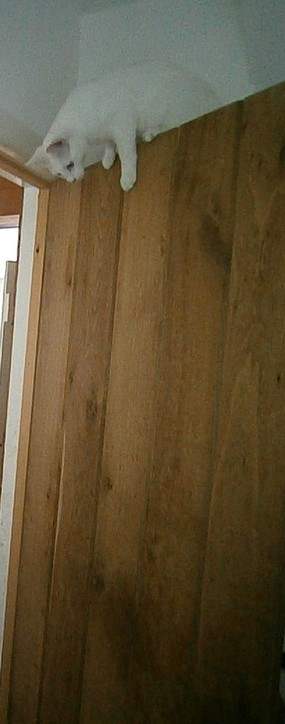About Turkish Angora Cats
AboutTurkishAngora Cats
Turkish Angoras are an ancient breed of long-haired cat. They originate from Angora another name for Ankara the capital of Turkey. Turkish Angora cats like the Angora goat are renowned for their long, soft, silky fur known as mohair in goats. Unlike the Persian longhair, Turkish Angoras do not have a woolly undercoat . Turkish Angora's fine silky hair is consequently easy to groom.
The Angora cat was recorded as a distinct breed in Turkey as early as the 1400s. They were the very first long-haired cats to be introduced to Europe in the 16th century. The first ones to arrive were special gifts from Turkish Sultans to noble families in France, England and Italy. They became very fashionable in the 18th century French court. Legend has it that the famous French queen Marie Antoinette had six beloved white Angora cats who arrived by ship in Maine, U.S.A. in the ship that she had intended for her escape during the French revolution.
It was not until later in the 18th century and especially towards the end of the 19th century that this elegant breed was joined in Europe by the even fuller coated Persian longhair. In 1868 the Turkish Angora was described as
" a beautiful cat with silvery hair of fine texture generally longest on the neck but also on the tail."
Harrison Weir a famous authority on cats who thought of and organized the very first major cat show in Crystal Palace in 1871 said of the Turkish Angora in 1889
" the best are of high value a pure white with blue eyes, being thought the perfection of cats all other points being good, and its hearing by no means defective....The colours are varied but the black which should have orange eyes, as should the slate colours, and the blues, and the whites are the most esteemed."
However, during the 19th century the Persian had become increasingly popular and the traditional Angora was becoming increasingly rare. Eventually by the beginning of the 20th century the Turkish Angora had been eclipsed by the Persian and disappeared from Europe and America.
Consequently the Turkish government set up a breeding programme at Ankara zoo because the breed was in danger of becoming extinct. The zoo made a collection of surviving Turkish cats and began a serious breeding programme keeping only white cats with amber, blue or odd eyes. In the early 1960s some of the progeny of this breeding programme were exported to the U.S.A. and by 1970 the Turkish Angora was finally accepted back into the show ring as an ancient breed. In the 1970s Turkish Angoras were also exported from Turkey to Europe. At first only white Angoras were allowed as white was the only colour that the zoo preserved. However, by 1978 it was acknowledged that colours could occur and the establishment of breeding lines for specific colours began. It was also realized that by breeding white to coloured cats greatly reduced the risk of deaf kittens being born.
The true Turkish Angora is now established in America and many European countries. However, it is still very much a rarity in the U.K.
The Turkish Angora is recognised for championship status by the CFA and TICA and FIFE in Europe (Felis Britannia in the UK). It is not recognised by the GCCF - yet!
Folklore
It is believed in Turkey that Ataturk would return in the guise of a deaf white Angora cat.
Character and temperament
Turkish Angoras are friendly, lively,playful, agile and affectionate, cats. They are usually very clever and inquisitive and like to help you whatever you are doing. They are not docile lap cats although they often like to sit on your lap or shoulders. They often have strong personalities and do not give up easily.They form a very strong bond with their special people. They are fast and like to explore whether that be the top of the cupboards or doors or inside your wardrobe!The kittens are active and play very early. They do not develop the full Angora coat until two years old.

Watch CATS 101 youtube video here about Turkish Angoras
http://youtu.be/xrvM-eymMNI